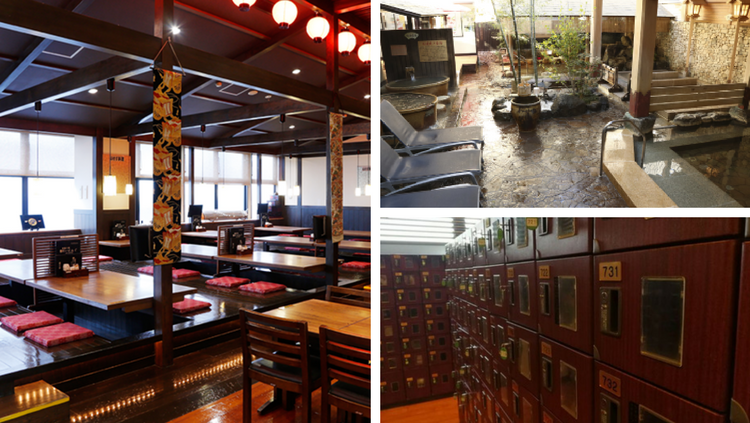
Hot, cold. Fire, water. Quiet, relaxation. Ahhhh.
Spas deliver unique wellness experiences. I'm going to argue that it is better to go to the spa solo.
At Thermëa in Winnipeg, I enjoyed a fabulous winter spa day despite, or perhaps thanks to, the outside temperature being -12° Celsius or 10° Fahrenheit.
I was later asked by a friend whether I felt out of place being there solo. It's true, there were few people there on their own. However, I did not feel out of place. Quite the opposite.
I watched friends and couples move collectively from one feature of the spa to another. How unfortunate, I thought. Being on my own I truly moved when I wanted to move without accommodating the rhythms of others. Thermëa is a quiet zone and as I listened to whispers of conversation around me, I thought how fortunate I was to be living the spa experience solo, resting in my own silence, into a deep relaxation that would not have been possible if accompanied by a friend.
I have had many wonderful spa and water treatments around the world, most of which have been solo. I encourage you to explore the spa experience solo whenever you have the opportunity.

Sitting by the fire outside offers its own kind of hot/cold experience.
Winter Spas are for Solo Travelers
In Canada, I've been to the Thermëa Spa mentioned above. It has locations in Winnipeg and Chelsea, outside of Ottawa, and soon will have another in Whitby, outside of Toronto. I've also been to the Scandinave Spa in Whistler, BC. They have other locations in Old Montreal; Blue Mountain, north of Toronto; and Mont Tremblant, north of Montreal. The concepts are similar. They are Scandinavian-style spas with saunas, eucalyptus steam rooms, hot baths, cold plunges, and waterfalls.
The thermal cycle recommended is hot in a sauna or pool, followed by cold, followed by rest. Thermëa Spa recommends that you follow this cycle three times. With the low temperatures in Winnipeg, I had no desire for the cold plunge. Stepping out of the hot bath into the cold air was enough of a shock to the system without going neck deep into ice-cold water. I had the full thermal cycle of hot, cold, rest without getting into the cold pool.
Speaking of rest, I concede, that was my favorite part. At Thermëa there are many options, including lounge chairs by outdoor fire pits. I preferred their rest pavilion with its heated, reclining beds that overlook the pools. I loved these! The building also has another room with beds where people actually go to sleep. Fabulous!
The price for general access to the spa is $45 Monday to Thursday and $58 Friday to Sunday. You can bring your own robe and flip flops or you can rent the robe for $12 and buy the flip flops. Thermëa also offers spa treatments like massage and facials for additional fees. My day at the spa was hosted by Thermea but my description of the experience is all my own.

Rest building. The curved, reclining beds of tile are heated, making for a deeply relaxing experience.

This super onsen in Kyoto has a restaurant, many pools, and lockers. The lockers shown are for your shoes as you enter. There are others in the dry room.
Japanese Spas Solo: Onsens and Sentos
Baths and hot springs are part of the fabric of Japanese culture. Sentos are public bath houses in which the bath water is heated. Onsens are bath houses in which the bath water comes from natural hot springs. There are over 20,000 onsens in Japan thanks to the volcanic nature of the island.
Japanese baths are made for rejuvenation, not washing. Before getting into a bath it is typical to shower, washing hair and body, so that the bath is entered perfectly clean. The Japanese use baths for health purposes. They are considered valuable for warming up the body to improve circulation and metabolism which can have dietary and skin-beautifying effects. The heat also alleviates fatigue and muscle pain. The baths go beyond health benefits. Japanese baths are social affairs. They are often a meeting place for neighbors and friends.
In addition to the typical onsen there are super onsens. These Japanese spas include many more services, such as shiatsu and other massage services and healthy restaurants. Read about my experience going to a Japanese super-onsen solo here How to Onsen: The Naked Truth About Japan’s Best Cultural Experience.

Yes, floating in the Dead Sea is easy. The only challenge is getting in. You can't walk in. You have to back in.
The Dead Sea Spa Benefits
Whether you go to a Dead Sea spa or just go and soak in the Dead Sea, the experience is believed to have many benefits. The Dead Sea has eight times more minerals than most sea water. It is the saltiest in the world. The intensity of the water is believed to treat joint pain, arthritis, psoriasis, and even heart problems. It is believed that the low elevation (over 400 meters below sea level) and high oxygen levels of the location are also beneficial.
Though there are many spas at the Dead Sea, when I went I did not take any special spa treatments. Going into the sea and applying its mud has so many of its own benefits that I didn't feel the need. After all, Dead Sea mud is sold at premium beauty product prices.
When you go to a Dead Sea beach you will find buckets of mud. Step one is applying the mud to your body, face and all. Some other things to be aware of if you go: use an old bathing suit and water shoes or sandals that you don't care about (the salt water ruined my favorite pair of leather sandals when I was there) and don't get water in your eyes (it will sting badly).

Enjoy the mud!
